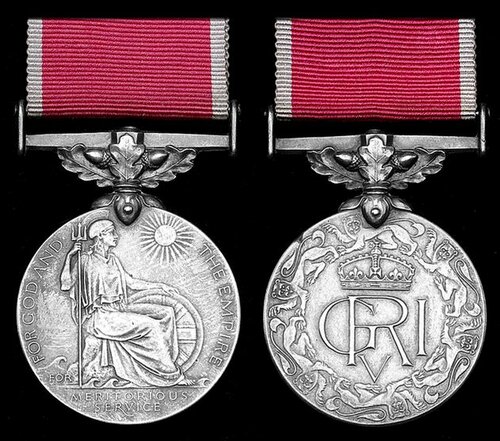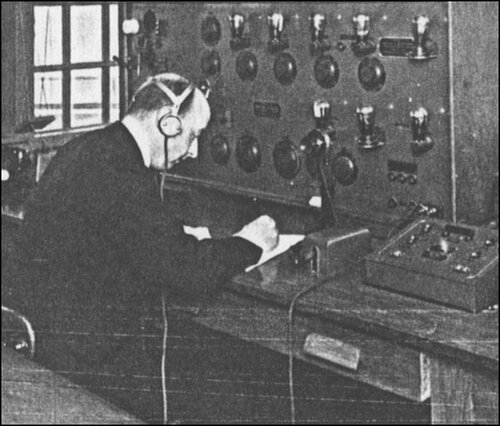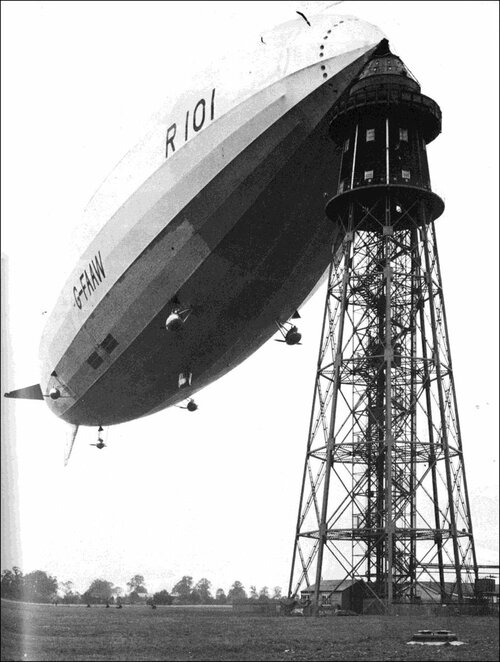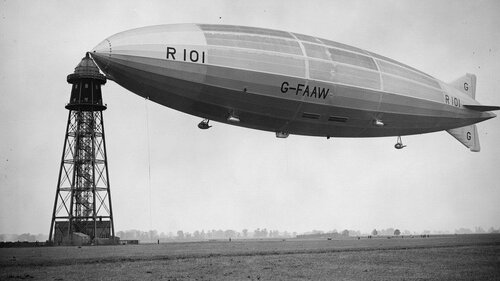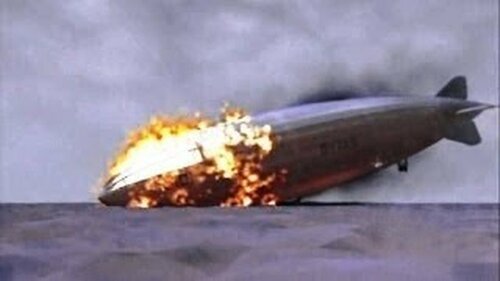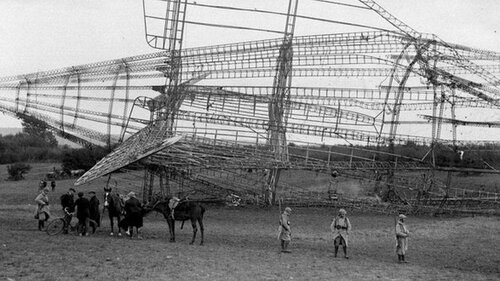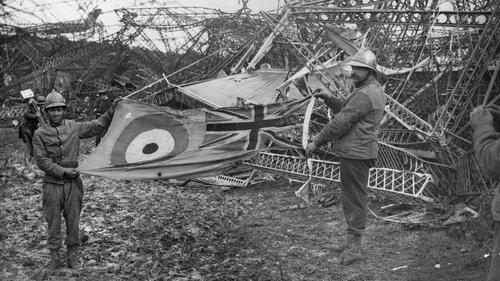Auction: 21001 - Orders, Decorations and Medals (conducted behind closed doors)
Lot: 364
(x) The extremely rare and emotive British Empire Medal awarded to Arthur Disley, one of just six survivors from the R. 101 disaster in France in October 1930 - though suffering from severe burns, he insisted on telephoning first news of the disaster to the Air Ministry
British Empire Medal, (Civil) G.V.R. (Arthur Disley), in its fitted card box of issue, good very fine
B.E.M. London Gazette 31 October 1930. The original recommendation states:
‘For gallantry and devotion to duty displayed when the R. 101 was wrecked near Beauvais on 5 October 1930. Mr. Disley was Wireless Operator on board the airship. Despite the terrible experiences which he underwent from the blazing wreckage, and severe burns suffered in the process, he insisted before being treated for his injuries on telephoning the first details of the disaster from Beauvais to the Air Ministry. His conduct was such as to excite the admiration of all who witness it.’
The R. 101 disaster needs little introduction here, attracting as it did a mass of world wide media coverage - the airship’s roll honour listed no less than 48 names, among them a host of experienced airship pioneers and Brigadier-General Lord Thomson, C.B.E., D.S.O., the Secretary of State for Air.
Back in 1924, the British Government had decided to build two modern rigid airships with a view to starting an airline with a preliminary route being London-India and eventually London-Australia. Constructed at the Royal Airship Works at Cardington in Bedfordshire, the R. 101 found herself under growing competition from airship R. 100, the latter being privately funded and being constructed by Vickers.
However, after much political wrangling over her size and engines, R. 101 completed her first test flight in October 1929, though she was found to be lacking in several fundamental areas, not least the fact she weighed some 23 tons more than originally intended, as a result of her complex design; so, too, the added concern of a reduction in lift. Accordingly it was argued that the programme should be scrapped, but the incumbent Labour Government had already invested a fortune in the project and was reluctant to back down. Modifications were therefore carried out, including the scrapping of a particularly costly power steering unit, while Lord Thomson, the Secretary of State for Air, pressed for a maiden flight to India - his intention being for a triumphant return to the U.K. in mid-October 1930, to attend the Imperial Conference, an intention no doubt further influenced by the fact the R. 100 had just completed a successful crossing to Canada. Further frustrated by the results of R. 101’s next test flight - one engine had to be shut down after the failure of the oil cooling system - Lord Thomson continued nonetheless to push for the flight to India and obtained R.101 a Certificate of Airworthiness without even a proper inspection of the airship being carried out; her speed trials, meanwhile, were to be carried out during the trip to India.
Thus was set in motion the inaugural flight of the world’s largest airship, R. 101’s 777 feet long airframe carrying 54 passengers - the resultant weight compelling her to ditch four tons of water to get airborne from Cardington at 7.34 p.m. on 4 October 1930. Rolling and pitching a few miles out of Cardington, and consequently flying very low, she reached the coast over Hastings at around 9.30 p.m. and thence set out over the Channel. Here then, the point at which Arthur Disley turned into his quarters in the Electrical Switch Room:
‘At about 22.30 hours I turned in but for some time before that, possibly for half an hour, I happened to be in the Chart Room and heard Commander Atherstone tell the Flight Coxswain (I think it was L. F. Oughton) not to let the ship go below 1,000 feet. I saw him take the elevator wheel and pull the ship up to this height, which change of height I actually read off the altimeter. At that time, Major Johnston was taking draft readings using calcium flares. While I was there Major Scott came into the room and passed down into the control car. I did not leave the Electrical Switch Room again after I turned in at about 22.30 hours ... ’ (T.N.A. AIR 5/903 refers).
At 02.00 hours, the R. 101 having crossed the Channel and passed over Poix airfield, the watch was changed, shortly after which the airship was overtaken by a terrible storm over Beauvais. Arthur Disley continues:
‘I became conscious of the ship dipping a little; not more than it had done before, and this change of altitude seemed to be corrected immediately. At that moment, George Hunt, the Chief Coxswain, came into the Electrical Switch Room and said, “We’re down, lads.” And then, just as I was trying to get up, the ship went into a steep dive which threw me back on to the bed. I then heard the engine telegraph bell ring - and very shortly afterwards the crash came. I would say the crash was more of a crunch than a violent or sudden impact. I have a faint recollection of ‘tripping’ one of the electric field switches before the fatal crash came. The first explosion followed immediately after the crash and was very violent. The two which followed were far less violent. I think the final dive was very steep ... ’ (T.N.A. AIR 5/903 refers).
In a subsequent statement made to the British United Press from his hospital bed in France, Disley elaborated on those final terrifying moments aboard the burning R. 101:
‘I dashed into the corridor seeking a means of escape. My first thought was the fabric - to tear the fabric and fight my way out. I attacked it using both my nails and my teeth, but it withstood all my efforts. Again and again I charged at the fabric, but I was losing my strength every minute while the flames were coming closer. I sank down exhausted. I believed my fate was sealed and that my last hope had gone. As I sank down I felt something give way under my feet, and I fell down in what seemed to be a raging fire. I put out my hand and felt something wet. It was wet grass!
I crawled on my hands and knees along the grass until I came to an obstacle which barred my path. It was a steel girder, which was so hot that it burned my hand to the bone. I got out just in time and I saw two men dash towards me shouting “There’s another.” One was Leech. They dragged me away. I joined them and tried to find some of the others.’
Then, in spite of his severe burns, Disley insisted before being treated on telephoning the first details of the disaster from Beauvais to the Air Ministry, a gallant gesture that gained the admiration of all who witnessed it, and the award of his B.E.M. The only other award to a member of R. 101’s crew would appear to be the Albert Medal bestowed on the Foreman Engineer, Henry Leech, A.F.M., who pulled Disley from the wreckage.
The return of the R. 101’s dead aboard two destroyers, their lying in state in Westminster Hall, and their burial in a common grave at Cardington were yet further cause for extensive media coverage, so too the subsequent investigation in to the causes of the tragedy. For his own part, Disley was invested with his B.E.M. at Cardington by Lord Amurlee, the newly appointed Air Minister, on 11 December 1930, and afterwards, in the presence of the Prime Minster and Secretary of State for Air, attended the unveiling of the R. 101 memorial in France.
Sold with a quantity of original documentation, including Royal Airship Works letter to Mrs. Disley, informing her of her husband’s survival, dated 5 October 1930; a Cardington notice board announcement detailing arrangements for the forthcoming presentation of Disley’s B.E.M., dated 9 December 1930; Air Ministry and Royal Airships Works letters regarding the unveiling of the R. 101’s memorial at Allonne, France, both dated 16 September 1933; a copy of the Minutes of Proceedings at the Public Enquiry into the Loss of the Airship R. 101, Fourth Day, 31 October 1930, held at the Institution of Civil Engineers, and containing Disley’s lengthy evidence; a post card of R. 101; and a comprehensive file of copied research, with definitive coverage of the official exchanges between Government offices to get Disley’s B.E.M. gazetted at the same time as Leech’s A.M.
It should be noted in 2018 the news of a feature film on the disaster was announced:
https://www.bbc.co.uk/news/uk-england-beds-bucks-herts-45731665
For footage of the airship, please see:
https://www.youtube.com/watch?v=6jAI7C1E4hg
https://www.youtube.com/watch?v=gdPrUBkMgdE
Subject to 5% tax on Hammer Price in addition to 20% VAT on Buyer’s Premium. For more information please view Terms and Conditions for Buyers.
Sold for
£10,000
Starting price
£4000

